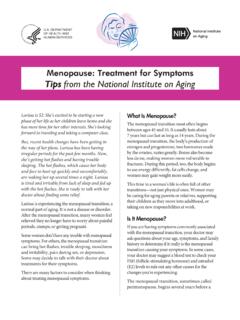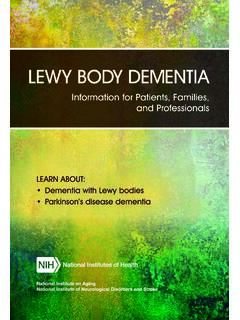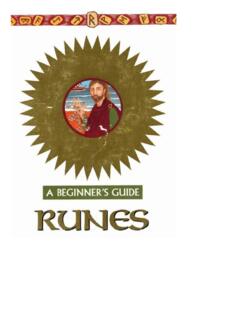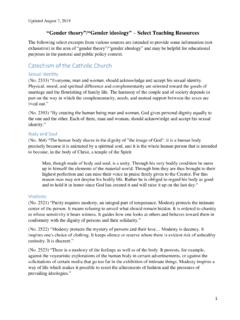Transcription of Frontotemporal Disorders: Information for Patients ...
1 Frontotemporal DISORDERSI nformation for Patients , Families, and CaregiversLEARN ABOUT: Frontotemporal dementia Primary progressive aphasia Movement disordersNational Institute on AgingNational Institute of Neurological Disorders and StrokeThe National Institute on Aging (NIA) and the National Institute of Neurological Disorders and Stroke (NINDS) are part of the National Institutes of Health, the nation s medical research agency supporting scientific studies that turn discovery into health. NIA leads the federal government effort conducting and supporting research on aging and the health and well-being of older people. NIA s Alzheimer s and related Dementias Education and Referral (ADEAR) Center offers Information and publications on dementia and caregiving for families, caregivers, and professionals. NINDS is the nation s leading funder of research on the brain and nervous system.
2 The NINDS mission is to reduce the burden of neurological disease. For additional copies of this publication or further Information , contact:National Institute on AgingAlzheimer s and related Dementias Education and Referral Institute of Neurological Disorders and 1-800-352-9424 CONTENTSI ntroduction ..1 The Basics of Frontotemporal Disorders ..2 Types of Frontotemporal Disorders ..5 Causes ..11 Diagnosis ..13 Common Symptoms ..15 Treatment and Management ..18 Caring for a Person with a Frontotemporal Disorder ..23 Conclusion ..26 Resources ..271 IntroductionFew people have heard of Frontotemporal disorders, which lead to dementias that affect personality, behavior, language, and movement. These disorders are little known outside the circles of researchers, clinicians, Patients , and caregivers who study and live with them. Although fronto-temporal disorders remain puzzling in many ways, researchers are finding new clues that will help them solve this medical mystery and better understand other common dementias.
3 The symptoms of Frontotemporal disorders gradually rob people of basic abilities thinking, talking, walking, and socializing that most of us take for granted. They often strike people in the prime of life, when they are working and raising families. Families suffer, too, as they struggle to cope with the person s daily needs as well as changes in relationships and booklet is meant to help people with Frontotemporal disorders, their families, and caregivers learn more about these conditions and resources for coping. It explains what is known about the different types of disorders and how they are diagnosed. Most importantly, it describes how to treat and manage these difficult conditions, with practical advice for caregivers. A list of resources begins on page Basics of Frontotemporal Disordersfrontal lobetemporallobeFrontotemporal disorders are the result of damage to neurons (nerve cells) in parts of the brain called the frontal and temporal lobes.
4 As neurons die in the frontal and temporal regions, these lobes atrophy, or shrink. Gradually, this damage causes difficulties in thinking and behaviors normally controlled by these parts of the brain. Many possible symptoms can result, including unusual behaviors, emotional problems, trouble communicating, difficulty with work, or difficulty with walking. A Form of DementiaFrontotemporal disorders are forms of dementia caused by a family of brain diseases known as Frontotemporal lobar degeneration (FTLD). Dementia is a severe loss of thinking abilities that interferes with a person s ability to perform daily activities such as working, driving, and preparing meals. Other brain diseases that can cause dementia include Alzheimer s disease and multiple strokes. Scientists think that FTLD is the most common cause of dementia in people younger than age 60.
5 Roughly 60 percent of people with FTLD are 45 to 64 years can live with Frontotemporal disorders for up to 10 years, sometimes longer, but it is difficult to predict the time course for an individual patient. The disorders are progressive, meaning symptoms get worse over time. In the early stages, people may have just one type of symptom. As the disease progresses, other types of symptoms appear as more parts of the brain are affected. No cure or treatments that slow or stop the progression of Frontotemporal disorders are available today. However, research is improving awareness and understanding of these challenging conditions. This progress is opening doors to better diagnosis, improved care, and, eventually, new FTLD? Understanding TermsOne of the challenges shared by Patients , families, clinicians, and researchers is confusion about how to classify and label Frontotemporal disorders.
6 A diagnosis by one doctor may be called something else by a second, and the same condition or syndrome may be referred to by another name by a pathologist who examines the brain after death. For many years, scientists and physicians used the term Frontotemporal dementia (FTD) to describe this group of illnesses. After further research, FTD is now understood to be just one of several possible variations and is more precisely called behavioral variant Frontotemporal dementia, or bvFTD. This booklet uses the term Frontotemporal disorders to refer to changes in behavior and thinking that are caused by underlying brain diseases collectively called Frontotemporal lobar degeneration (FTLD). FTLD is not a single brain disease but rather a family of neurodegenerative diseases, any one of which can cause a Frontotemporal disorder (see Causes, page 11). Frontotemporal disorders are diagnosed by physicians and psychologists based on a person s symptoms and results of brain scans and genetic tests.
7 With the exception of known genetic causes, the type of FTLD can be identified definitively only by brain autopsy after in the BrainFrontotemporal disorders affect the frontal and temporal lobes of the brain. They can begin in the frontal lobe, the temporal lobe, or both. Initially, Frontotemporal disorders leave other brain regions untouched, including those that control short-term frontal lobes, situated above the eyes and behind the forehead on the right and left sides of the brain, direct executive functioning. This includes planning and sequencing (thinking through which steps come first, second, third, and so on), prioritizing (doing more important activities first and less important activities last), multitasking (shifting from one activity to another as needed), and monitoring and correcting errors. 4 When functioning well, the frontal lobes also help manage emotional responses.
8 They enable people to avoid inappropriate social behaviors, such as shouting loudly in a library or at a funeral. They help people make decisions that make sense for a given situation. When the frontal lobes are damaged, people may focus on insignificant details and ignore important aspects of a situation or engage in purposeless activities. The frontal lobes are also involved in language, particularly linking words to form sentences, and in motor functions, such as moving the arms, legs, and temporal lobes, located below and to the side of each frontal lobe on the right and left sides of the brain, contain essential areas for memory but also play a major role in language and emotions. They help people understand words, speak, read, write, and connect words with their meanings. They allow people to recognize objects and to relate appropriate emotions to objects and events.
9 When the temporal lobes are dysfunctional, people may have difficulty recognizing emotions and responding appropriately to lobe and part of the lobe is affected first determines which symptoms appear first. For example, if the disease starts in the part of the frontal lobe responsible for decision-making, then the first symptom might be trouble managing finances. If it begins in the part of the temporal lobe that connects emotions to objects, then the first symptom might be an inability to recognize potentially dangerous objects a person might reach for a snake or plunge a hand into boiling water, for s going on?Brian, an attorney, began having trouble organizing his cases . In time, his law firm assigned him to do paperwork only . Brian s wife thought he was depressed because his father had died 2 years earlier . Brian, 56, was treated for depression, but his symptoms got worse.
10 He became more disorganized and began making sexual comments to his wife s female friends . Even more unsettling, he neither under- stood nor cared that his behavior disturbed his family and friends . As time went on, Brian had trouble paying bills and was less affectionate toward his wife and son . Three years after Brian s symptoms began, his counselor recommended a neurological evaluation . Brian was diagnosed with bvFTD .5 Types of Frontotemporal Disorders Frontotemporal disorders can be grouped into three types, defined by the earliest symptoms physicians identify when they examine Patients . Progressive behavior/personality decline characterized by changes in personality, behavior, emotions, and judgment (called behavioral variant Frontotemporal dementia). Progressive language decline marked by early changes in language ability, including speaking, understanding, reading, and writing (called primary progressive aphasia).











